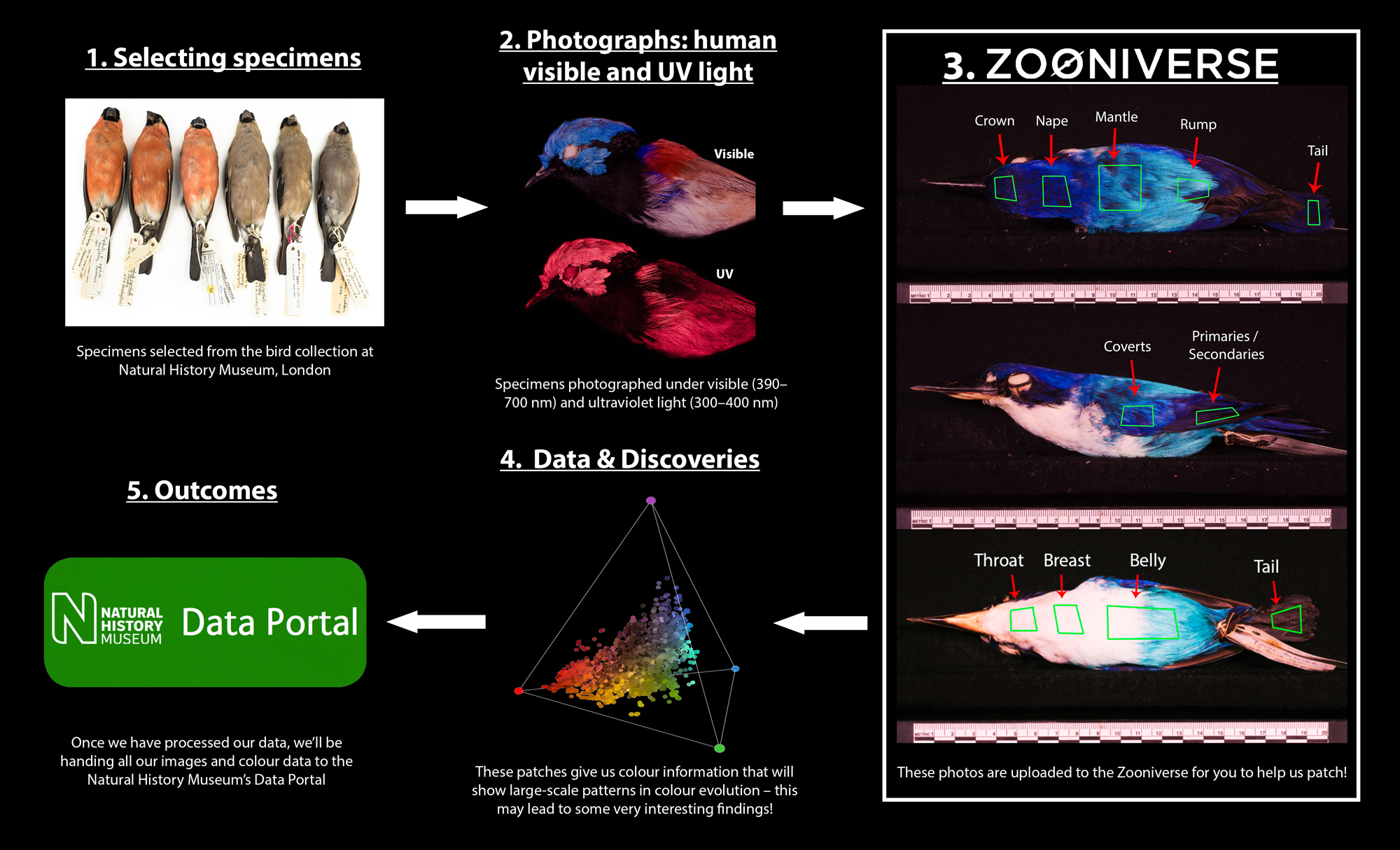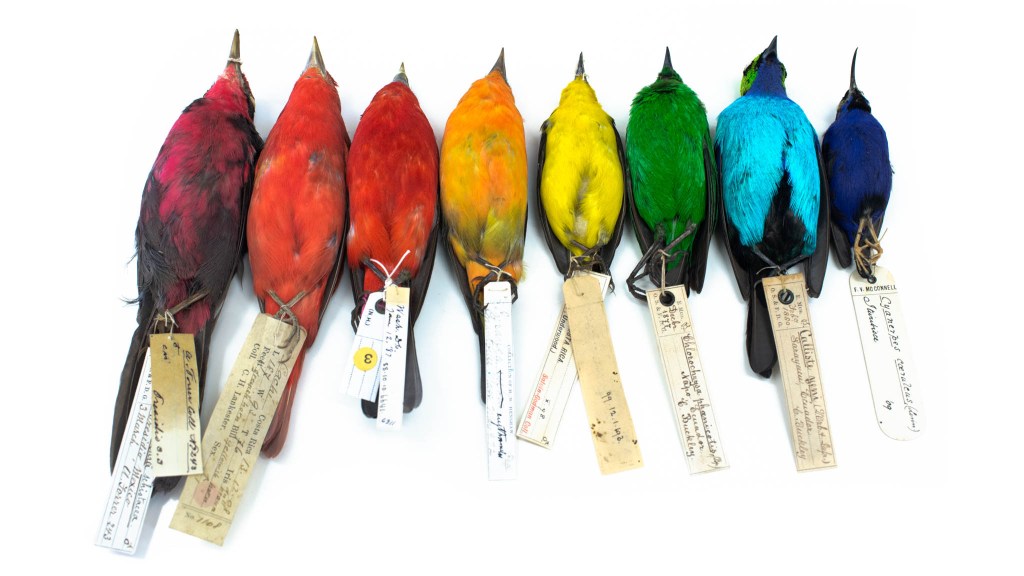Beautiful bird feathers bring bird watchers flocking together. From brightly colored birds like the painted bunting to a bird-of-paradise with a feather structure that absorbs light, resulting in a super-black color, birds come in a dazzling array of colors. To other birds, they look more stunning still, with additional ultraviolet colors that can’t be perceived by the human eye.
Scientists with Project Plumage, a citizen science project available through Zooniverse, are working to answer questions about bird plumage like, how colorful are birds? How quickly does plumage color evolve? Are changes in plumage color associated with the origins of new species?
They are photographing (where possible) three male and three female specimens of each species in the collections of the Natural History Museum (London & Tring). The photographs will be taken both in the visible spectrum and with ultraviolet filters. With more than 10,000 species of birds estimated in the world, that’s a lot of photographs and they’re calling on citizen scientists to help make sense of the color information through Project Plumage.

Before you decide to participate, be aware that these are photos of museum specimens, not living birds. Museum specimens are an essential tool in many scientific studies and these photographs will live on as a digital collection.
Citizen scientists make selections of patches on the bird that show the color in that area. For instance, you might be asked to select a sample area from the nape or the wing. It might sound challenging if you aren’t familiar with bird anatomy. However, participation is made easy by a starting tutorial, bird diagrams along the way, and a field guide with “right” and “wrong” examples of selections.
Once you’ve learned the process, you can make your selections for a given photograph in about a minute. Researchers will then analyze the selected patches for color intensity, hue, and pattern on each specimen. Data generated will be used to tackle questions about bird coloration and evolution.
What makes the project most fun are the optional features like an information button that reveals the species, so you can practice and expand your bird identification skills.
Better still, toggling between the white circles beneath the image allows you to see the bird under ultraviolet light, highlighting additional patches of variation in the plumage pattern. It’s the next best thing to a true bird’s eye view of plumage color.




Join the Discussion